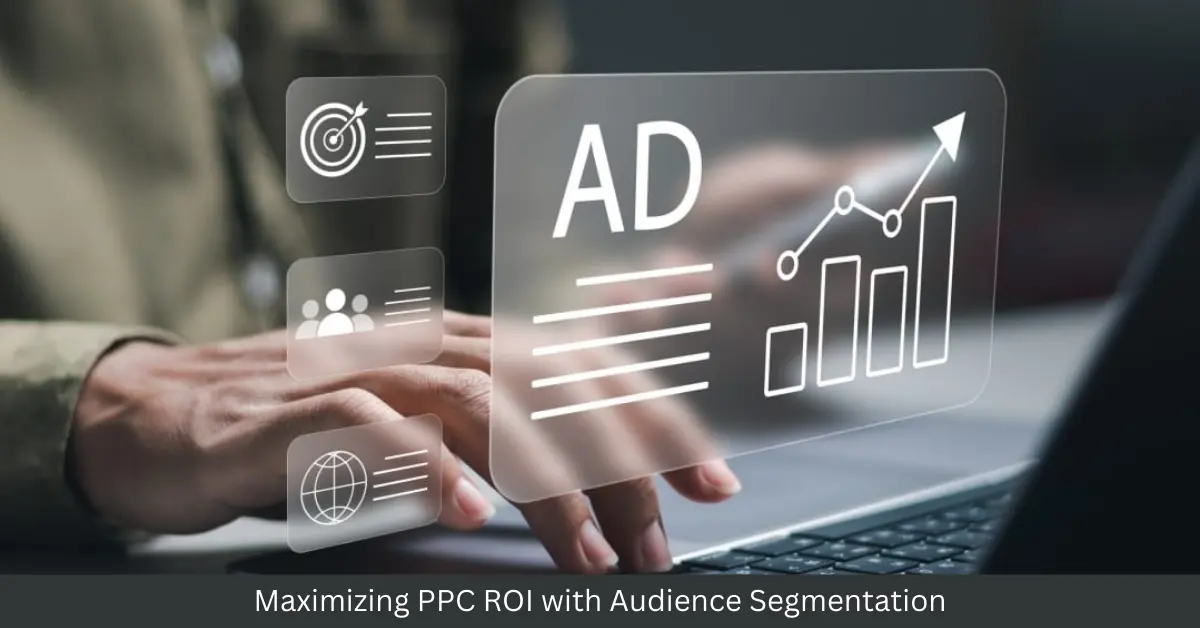Pay-Per-Click (PPC) advertising has become a go-to strategy for businesses seeking measurable results and targeted traffic. Yet, as consumer expectations grow and digital advertising becomes more intricate, traditional blanket strategies are no longer effective. Audience segmentation offers a way to refine campaigns, making every interaction meaningful and every dollar count.
This article dives into the significance of audience segmentation, focusing on micro-segmentation techniques to improve ad performance, optimize budgets, and achieve superior ROI.
Why Audience Segmentation Matters
Audience segmentation divides your target market into distinct groups based on factors like demographics, behaviors, and preferences. This allows advertisers to craft campaigns that address specific audience needs rather than relying on broad, generalized messaging.
Micro-segmentation goes further, creating highly detailed sub-groups for personalized messaging. For instance, instead of targeting “digital marketing professionals,” you might focus on “small business owners in urban areas seeking cost-effective SEO strategies.” This precision helps increase engagement, improve conversion rates, and enhance overall campaign efficiency.
How Audience Segmentation Impacts ROI
- Relevance Improves Performance: Ads tailored to specific audiences are more likely to capture attention and drive clicks.
- Reduced Wasted Spending: Narrow targeting ensures your budget is spent on high-value prospects rather than irrelevant audiences.
- Enhanced Conversion Rates: Personalized messaging increases the likelihood of turning interest into action.
- Stronger Customer Relationships: When ads align with user preferences, they foster trust and build loyalty over time.
Strategies for Effective Audience Segmentation
To maximize the potential of segmentation, it’s crucial to combine data-driven insights with consistent optimization. Here are actionable strategies to implement:
1. Start with First-Party Data
Your existing customer data offers invaluable insights for segmentation. Analyze patterns from your CRM, website analytics, and previous campaigns. For instance, group users by browsing history, purchase behavior, or engagement levels to create more targeted campaigns. Retarget those who abandoned their carts with customized offers to re-engage them.
2. Use Behavioral Segmentation
Segmenting based on user actions helps refine targeting. Group users who:
- Downloaded specific resources
- Watched product videos
- Added items to their carts but didn’t purchase
- Browsed certain categories
Craft ads that guide these groups toward completing their next step, such as finishing a purchase or signing up for a service.
3. Build Lookalike Audiences
Platforms like Google Ads and Facebook Ads let you create lookalike audiences based on your top-performing customers. These audiences share similar traits and behaviors, increasing the likelihood of conversions.
4. Incorporate Geographic Targeting
Location-based segmentation is especially useful for businesses with regional or local campaigns. For instance:
- A restaurant could promote lunch specials to users within a certain radius during midday hours.
- An e-commerce store might run winter apparel ads in colder regions during seasonal sales.
5. Leverage Demographics for Precision
Demographic data like age, gender, income, and education can form the foundation of your segmentation efforts. When combined with behavior or interests, it creates highly focused audiences. For example, target “women aged 25–40 interested in sustainable fashion and yoga” for a campaign promoting eco-friendly activewear.
6. Segment by Device and Platform
Audiences interact differently across devices and platforms. Separate campaigns for mobile and desktop users to optimize their experience. Similarly, tailor creatives for platforms like YouTube, Instagram, or TikTok, focusing on the format and tone that work best on each.
7. Focus on Purchase Intent
Targeting users based on purchase intent ensures your ads are shown to those ready to convert. Use Google Ads’ in-market audiences or Meta’s shopping behavior filters to identify users actively seeking products like yours.
8. Layer Multiple Criteria
Combine segmentation factors for more precise targeting. For example, a luxury travel agency might segment users as “frequent travelers aged 30–45 with a high-income bracket interested in eco-tourism.” This approach ensures your ads reach the most relevant audience.
9. Run A/B Tests on Segments
Testing is key to optimizing segmented campaigns. Create A/B tests for different audience groups to see which segments respond best to specific ad creatives, headlines, or offers. Use these insights to fine-tune your strategy.
10. Automate Campaigns for Efficiency
Managing multiple segmented campaigns can be time-consuming. Use tools like Google’s Smart Bidding or Meta’s Automated Rules to streamline campaign management while maintaining personalization.
Real-World Applications of Micro-Segmentation
- E-commerce: A fashion retailer segmented its audience by purchase history. Returning customers received loyalty discounts, while first-time visitors were offered new customer incentives. This dual strategy increased both retention and acquisition rates.
- Travel Industry: A travel company used behavioral and geographic segmentation to promote tropical getaways to users searching for summer vacations and ski packages to those exploring winter sports.
- B2B SaaS: A software provider targeted enterprise decision-makers with ROI-focused messaging and end-users with productivity-driven ads, improving lead quality and customer acquisition.
Challenges and How to Overcome Them
- Data Overload: Too much data can make segmentation overwhelming. Focus on a few key metrics and test small segments before scaling.
- Increased Complexity: Managing numerous segmented campaigns can be resource-intensive. Automation tools can help streamline processes.
- Privacy Regulations: Stay compliant with privacy laws like GDPR and CCPA by using consent-based data collection methods.
Conclusion
Audience segmentation is an essential tool for creating impactful PPC campaigns. By understanding and targeting your audience at a granular level, you can deliver personalized messages that drive engagement, reduce wasted spend, and increase conversions. Start small, refine your strategy with data insights, and watch as your PPC campaigns transform into powerful revenue generators. With the right approach, segmentation isn’t just a tactic—it’s a pathway to measurable success.

